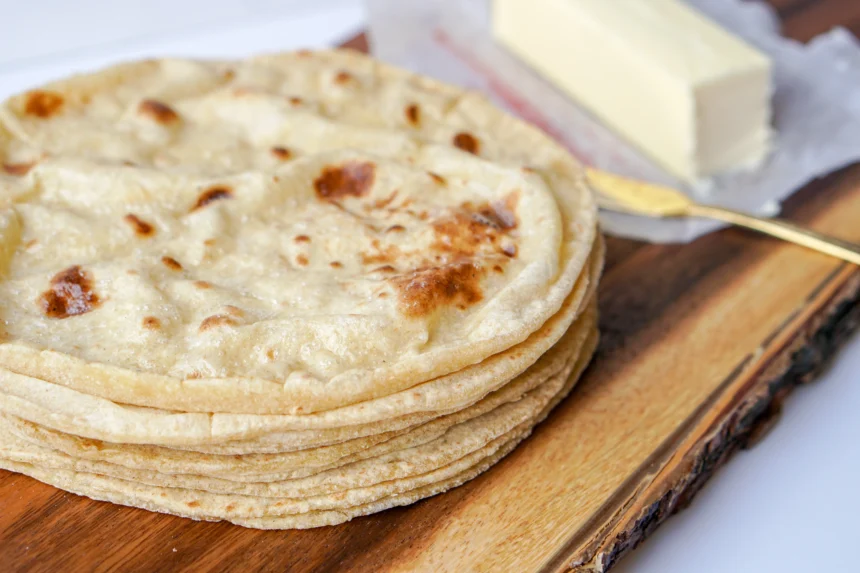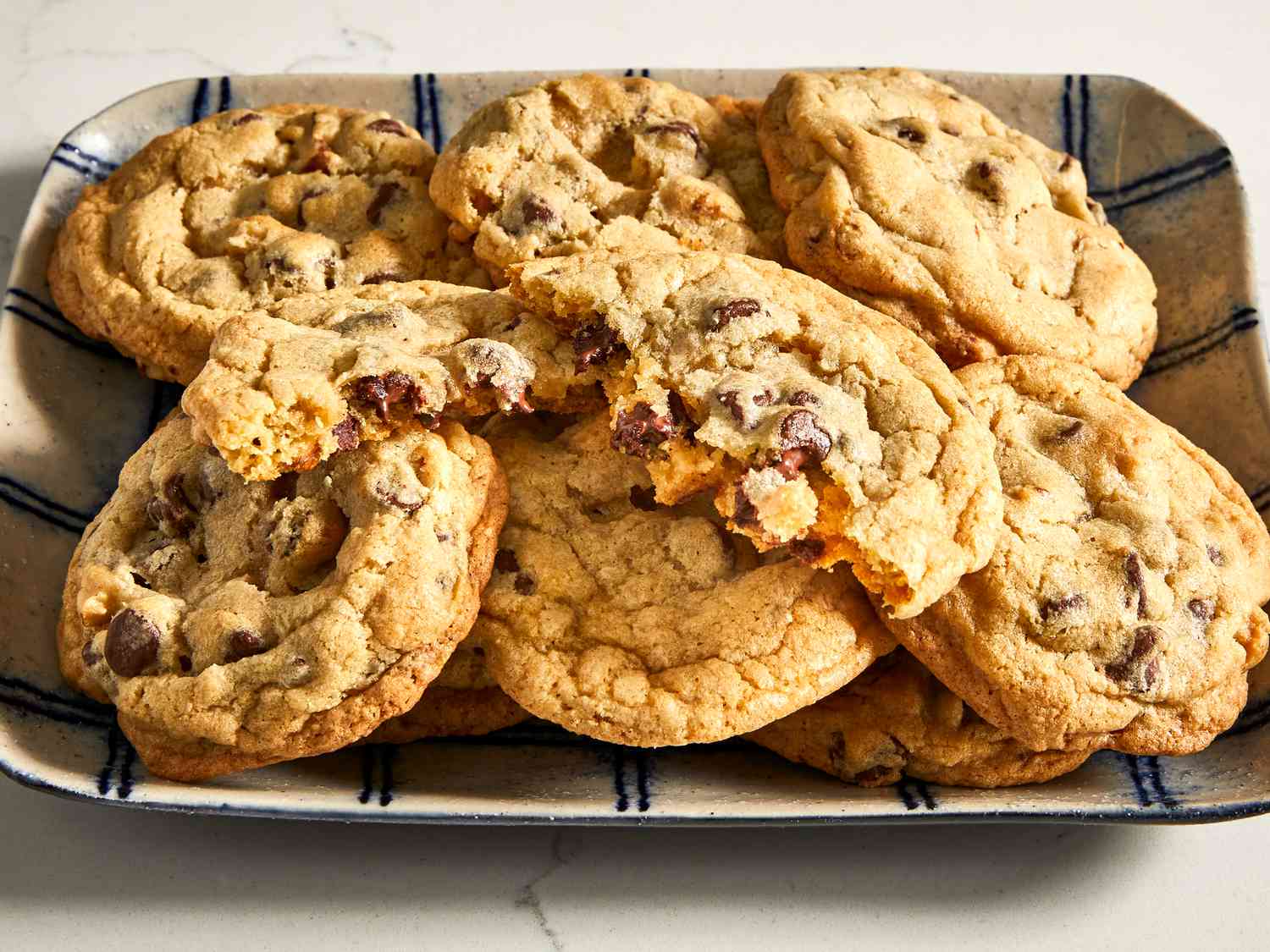Making soft chapatis at home may look hard, but once you understand the right method, it becomes very easy. Chapati is a simple Indian flatbread that people love to eat with vegetables, dals, and curries. For beginners, the biggest challenge is getting chapatis that stay soft and fluffy, even after they cool down. In this beginner-friendly guide, you will learn exactly how to make soft chapatis step by step, using only simple ingredients you already have at home.
If you are someone who is starting your cooking journey, or you want to improve your chapati-making skills, this guide will help you master the process. You can also explore more beginner cooking guides on our website at My First Recipe, where we share simple recipes made for new cooks.
What Makes Chapatis Soft?
Before learning the recipe, it is important to understand what makes chapatis soft. Several small things play a big role in the final softness.
First, the quality of the wheat flour matters. Fine, fresh whole wheat flour absorbs water better and gives a smooth dough. If the flour is too old, the chapatis may turn dry and hard.
Second, the dough must be soft and elastic. A tight or dry dough will never make soft chapatis. Proper kneading helps gluten develop, which is necessary for making chapatis puff and stay soft.
Third, the resting time is very important. Resting the dough allows the moisture to spread evenly. When the dough rests, the chapatis turn softer and lighter.
Finally, cooking temperature plays a key role. Chapatis should be cooked on medium-high heat. If the tawa is too cold, chapatis become dry. If it is too hot, they turn dark too quickly without cooking inside.
Ingredients You Need
To make soft chapatis, you need very few ingredients.
Whole wheat flour
Warm water
Salt (optional)
Oil or ghee (optional)
That is all you need. Even beginners can easily collect these ingredients from their kitchen.
Step-by-Step Guide to Make Soft Chapatis
Now let us move to the step-by-step process. When you follow each step correctly, your chapatis will become soft, light, and perfect every time.
Step 1: Measure the Flour Correctly
Start by taking the amount of flour you need. For two people, one cup of whole wheat flour is enough. Always measure using the same cup so that your dough turns consistent every time.
Put the flour into a large mixing bowl so that you get enough space to knead.
Step 2: Add Warm Water Slowly
Take warm water, not hot water. Warm water helps the dough become soft faster. Hot water will make the dough sticky, and cold water will make it tight.
Add a little water at a time and start mixing the flour with your fingers. Do not add too much water in one go. The slow method will give you a perfect dough.
Step 3: Knead the Dough Until Soft
Once the flour starts to come together, start kneading it with your palms. Use both hands and press the dough forward and then pull it back. Continue this motion for at least five to seven minutes.
Good kneading makes the dough elastic. If the dough feels dry, add a few drops of water. If it feels sticky, sprinkle a little flour.
Your dough should feel soft, smooth, and slightly bouncy.
Step 4: Let the Dough Rest
Resting the dough is a secret step many beginners forget. Cover the dough with a cloth or a plate and let it rest for at least fifteen to twenty minutes.
During the resting time, the dough becomes softer and easy to roll. If you skip this step, your chapatis may become dry or hard.
Step 5: Roll Chapatis Evenly
After resting, divide the dough into small round balls. Make sure the balls are smooth. Flatten one ball between your palms and dust it lightly with flour.
Roll the dough gently with a rolling pin. Try to roll evenly from all sides. Thick chapatis take longer to cook, while uneven chapatis may become hard. Do not press too hard while rolling, as that can make the chapatis stiff.
Step 6: Heat the Tawa Properly
Before placing your rolled chapati, the tawa must be hot. A medium-high heat is the perfect temperature. If the tawa is too hot, the chapati will burn. If it is not hot enough, the chapati will dry out.
A good test is to sprinkle a few drops of water on the tawa. If they evaporate quickly, the tawa is ready.
Step 7: Cook the Chapati on Both Sides
Now place the chapati carefully on the hot tawa. After a few seconds, small bubbles will form. Flip the chapati to the other side and cook it for a short time.
Flip again, and gently press the edges with a cloth or a spoon. This will help the chapati puff. Puffing makes the chapati soft and airy.
Remove the chapati when both sides have light brown spots.
Step 8: Apply Ghee or Store Properly
If you want extra soft chapatis, apply a little ghee on top while they are hot. Ghee keeps them moist and adds good flavour.
If you are not eating them immediately, store them in a closed container lined with a soft cloth. This helps lock in the moisture, keeping chapatis soft for a longer time.
Common Mistakes Beginners Make
Many beginners struggle because they repeat the same mistakes. Understanding these mistakes will help you avoid them.
One common mistake is adding too much water at once. This makes the dough sticky and difficult to roll. Another mistake is kneading for only a minute or two. The dough must be kneaded well to get the right texture.
Using a cold tawa is another mistake that makes chapatis hard. Always heat the tawa properly before starting. Rolling the chapati too thin or too thick can also affect softness.
With practice, you will stop making these mistakes and your chapatis will always turn soft.
Tips to Make Chapatis Extra Soft
If you want chapatis that stay soft even after many hours, here are some simple tips.
Use warm water instead of cold water. It helps make the dough smoother. Adding one teaspoon of oil to the dough also helps keep the chapatis moist. Cover the dough while resting so it doesn’t become dry.
When rolling chapatis, use very little dry flour. Too much dry flour makes chapatis hard. Press chapatis gently while cooking so they puff well.
Following these small tips will give you soft chapatis every single time.
Why This Recipe Is Perfect for Beginners
Beginners often feel nervous when making chapatis for the first time. This recipe is simple, easy to follow, and uses everyday ingredients from your kitchen. You do not need any advanced skills. With step-by-step instructions, you can start making soft, round, and tasty chapatis from day one.
If you are learning cooking for the first time, you can also explore more beginner recipes at My First Recipe. Our website shares simple meals that anyone can make without stress.
Frequently Asked Questions
Why are my chapatis turning hard?
Chapatis become hard when the dough is too tight or not kneaded properly. Another reason is cooking on a low flame, which dries the chapati before it cooks fully.
How much resting time is needed?
A minimum of fifteen minutes is needed. Resting helps the dough absorb water and become soft.
Can I use all-purpose flour instead of whole wheat flour?
You can, but chapatis made with all-purpose flour are softer but less healthy. Whole wheat flour is best for daily use.
Why do chapatis not puff?
Chapatis may not puff if the dough is too tight or if they are rolled unevenly. A properly heated tawa also helps with puffing.
Should I use oil or ghee?
Oil can be added to the dough to keep chapatis soft. Ghee can be applied after cooking for flavour and softness.
Final Thoughts
Learning how to make soft chapatis is a valuable skill for every beginner. Once you know how to knead the dough, roll evenly, and cook at the right temperature, everything becomes easy. Follow this guide step by step and with a little practice, your chapatis will turn out soft and delicious every time.
If you are looking for more beginner recipes, visit My First Recipe for simple, easy and tasty dishes that you can make at home.




